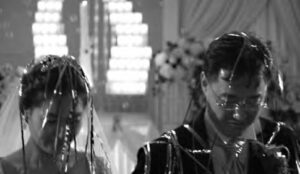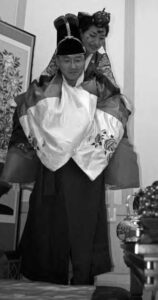The culmination of a long and formal process, the Korean wedding contains many traditional elements, while at the same time incorporating a surprising number of modern or “new style” elements. To contain these varied elements, most Korean weddings include dual ceremonies.
Traditionally, weddings took place at the home of the bride and included a variety of ceremonies—from matchmaking to a three-day stay in the bridal chamber.
Today, ceremonies typically take place in a wedding hall that seems more like a marriage factory. Wedding halls often run weddings simultaneously, and to enter the main hall is to enter a whirlwind of activity as brides, grooms, and retinues swirl from ceremony to ceremony, and then to post-wedding buffets. Prior to the wedding, a trusted friend or relative accepts gifts of cash that are presented in anonymous envelopes.
The first ceremony is the formal wedding, and although it is largely secular and based on Confucian traditions, is typically more “Western-looking.” The bride and groom are dressed in Western-style clothing and the ceremony is in a large churchlike hall. This ceremony does allow surprising latitude, as demonstrated by the picture of the groom doing pushups!
The second ceremony is more traditional, a translation of the final rites of the old Confucian wedding. This takes place in a much smaller room where the bride and groom sit, pour alcohol, and receive gifts, typically cash that is in envelopes. In this ceremony the bride and groom wear the traditional Han-bok.
Finally, the wedding party disappears for formal picture taking while wedding guests decamp to a communal cafeteria in which parties from various different weddings sit side by side, eat from a buffet, and then slip away.













